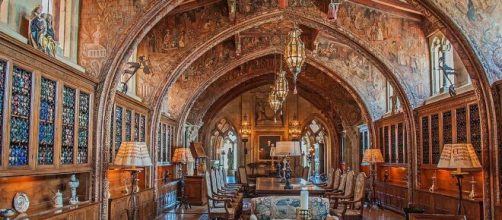When you think of an American architect, Frank Lloyd Wright likely comes to mind. When it comes to Julia Morgan, awareness is not certain. (More about her in a moment).
It’s understandable that you’d think of Wright. After all, his design of Falling Water, the vacation house in rural PA, was crowned “the best building of the 20th century” by the cognoscenti - American Institute of Architects.
Fault lines
Never mind that the four concrete slabs protruding over a waterfall so picturesquely sagged so badly they risked collapsing from the moment they were erected in 1936.
Clearly, the A.I.A. didn’t mind the sags, not to mention the leaks. Neither did the Museum of Modern Art, when it exhibited gorgeous photographs of the weekend getaway in 1938. Time magazine also ran the photographs.
Falling Water takes a pretty picture, no question about it. But the museum and the magazine had an obligation to mention the fault lines. Architecture is about function as well as form.
I fault lazy journalism for overlooking Scientific American magazine’s report on how Wright disregarded the advice of engineers. They said that load tests for the protruding slabs were past margins of safety.
Female complaint
Yet, while Wright is a household name, fellow American architect Morgan is less known, if at all.
This, even though she also designed a landmark - Hearst Castle, the 1,000 square foot mansion for the publishing tycoon William Randolph Hearst in San Simeon, California.
Morgan worked with Hearst for nearly 30 years to come up with his dream house filled with art and antiques from his vast collection.
Even Hearst’s indoor pool – styled after an ancient Roman bath, is filled with art including statues of Roman gods and goddesses.
Hearst’s Castle is in the news in two ways. First, after a 2-year restoration, the mansion is opening to the public on May 11. In the past, one million or more visited this landmark. It’s only fitting that the architect who designed it be known.
This leads me to the second reason the Hearst Castle is in the news. A new book, “Julia Morgan: An Intimate Biography of the Trailblazing architect” by Victoria Kastner.
Kastner, working as a historian at Hearst Castle, was able to unearth material never published before, such as drawings, diaries, and letters. There’s a lot to know here.
Worth mentioning
Morgan, who died in 1957, boasted a lot of firsts. Until she came along, no woman was admitted to study architecture at the Ecole des Beaux-Arts in Paris.
She also was the first woman to earn a civil engineering degree from the University of California at Berkeley, and she was the first female architect licensed in California.
Maybe it’s not all that surprising that Morgan is not as famous as Wright. A recent study conducted by art historian Katy Hessel asked 2,000 Brits to name just three female artists. Only 30 percent could do it.
You’d think that most people could at least name the three biggies - Frida Kahlo, Georgia O’Keeffe, and Mary Cassatt. Or at least the British artists, Barbara Hepworth and Tracy Emin.
Hessel conducted the survey to advance her forthcoming book “The Story of Art Without Men.” I don’t see why we need to leave men out of the story as long as women are part of the narrative.


